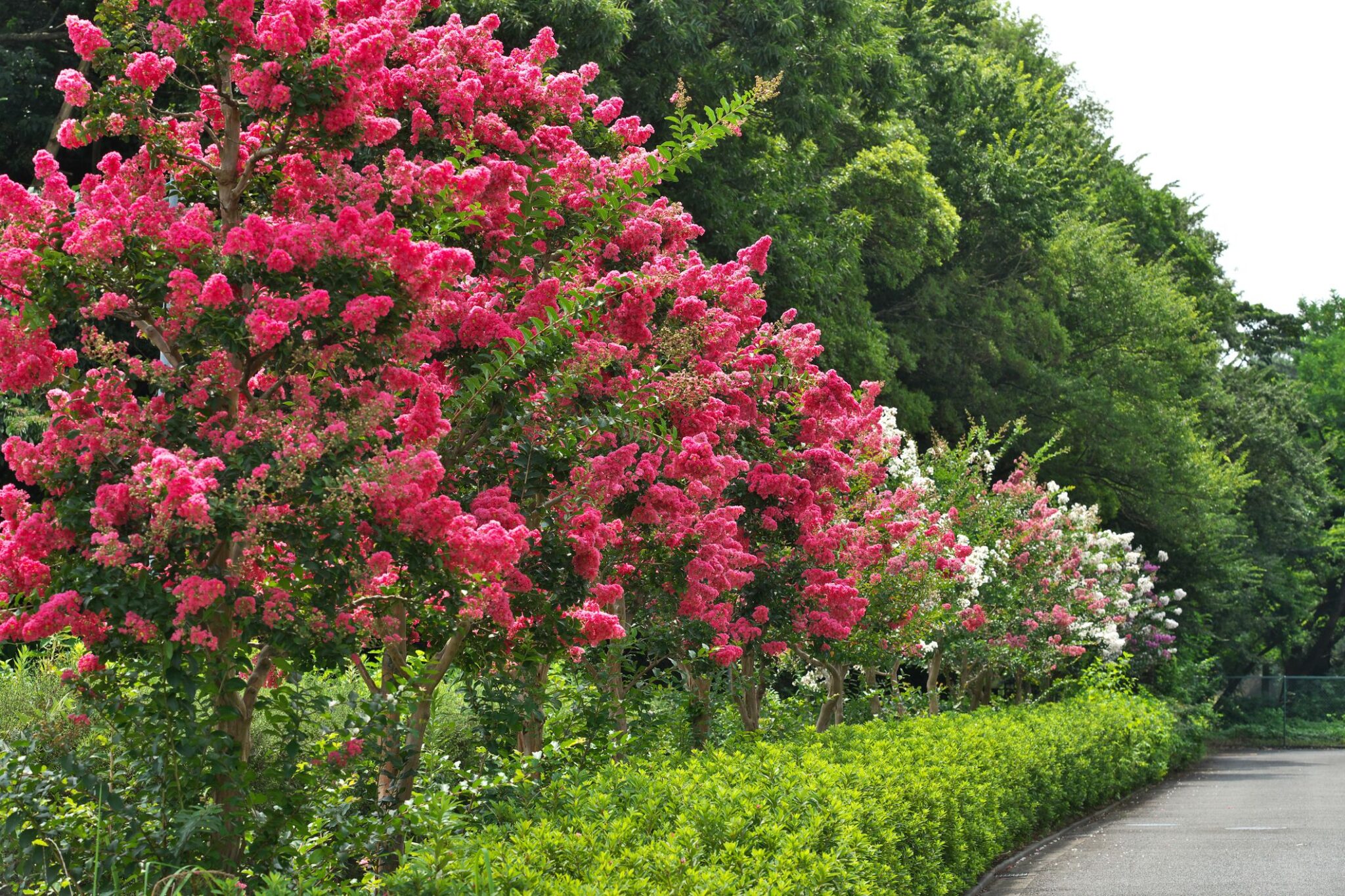Flowering trees bring vibrant colors and seasonal beauty to any landscape, transforming outdoor spaces into stunning displays of nature’s artistry. Choosing the right flowering tree for your garden can enhance its visual appeal, provide shade, and create a welcoming atmosphere. This guide will help you explore different types of flowering trees, how to select the best one for your needs, and essential care tips to keep your tree healthy and beautiful.
Types of Flowering Trees
Deciduous Flowering Trees
Deciduous flowering trees shed their leaves each fall, making way for new growth in the spring. These trees are known for their spectacular blooms, often providing a stunning display of color before their leaves fully emerge. Popular examples include:
- Cherry Blossom (Prunus serrulata): Renowned for its delicate pink and white blossoms, the cherry blossom tree adds a touch of elegance to any garden.
- Dogwood (Cornus florida): Featuring white, pink, or red flowers, the dogwood tree is a versatile choice that thrives in various climates.
- Magnolia (Magnolia grandiflora): With its large, fragrant white flowers and glossy green leaves, the magnolia tree is a classic choice for Southern gardens.
Evergreen Flowering Trees
Evergreen flowering trees retain their leaves year-round, providing a constant backdrop of greenery. They offer beauty and structure in winter as well as vibrant blooms in the warmer months. Notable examples include:
- Camellia (Camellia japonica): Known for its large, showy flowers in shades of pink, red, and white, the camellia tree is perfect for adding color throughout the winter months.
- Holly (Ilex opaca): This tree’s glossy green leaves and bright red berries make it a popular choice for festive decorations and year-round interest.
Tropical and Subtropical Flowering Trees
Ideal for warmer climates, tropical and subtropical flowering trees offer exotic blooms and lush foliage. They thrive in areas with mild winters and abundant sunlight. Examples include:
- Plumeria (Plumeria rubra): Often associated with tropical regions, the plumeria tree produces fragrant, colorful flowers in shades of pink, yellow, and white.
- Jacaranda (Jacaranda mimosifolia): Known for its striking purple flowers and fern-like leaves, the jacaranda tree creates a stunning visual impact in tropical and subtropical gardens.
Choosing the Right Flowering Tree
Climate Considerations
Selecting a flowering tree suited to your local climate is crucial for its growth and longevity. Research the hardiness zone of potential trees to ensure they can thrive in your area. Consult local nurseries or gardening experts for recommendations based on your region’s climate.
Soil and Space Requirements
Different flowering trees have varying soil and space needs. Some trees prefer well-drained soil, while others can tolerate heavier clay soils. Ensure you choose a tree that matches your soil conditions and has enough space to grow. Consider both the tree’s mature size and its root system to avoid potential issues with nearby structures or other plants.
Maintenance and Care Needs
Evaluate the level of maintenance required for each tree. Some flowering trees need regular pruning, while others are more low-maintenance. Consider how much time you can dedicate to tree care and choose a variety that fits your schedule and gardening preferences.
Caring for Flowering Trees
Watering
Regular watering is essential for healthy flowering trees. Establish a consistent watering schedule, especially during dry periods. Ensure the soil remains moist but not waterlogged, as excessive moisture can lead to root rot.
Fertilizing
Fertilize flowering trees with a balanced, slow-release fertilizer to support their growth and blooming. Follow the manufacturer’s instructions for application rates and timing. Avoid over-fertilizing, which can lead to excessive foliage growth at the expense of flowers.
Pruning and Trimming
Pruning helps maintain the tree’s shape and remove dead or diseased wood. Prune flowering trees after they have finished blooming to avoid cutting off next year’s flower buds. Regular trimming can also improve air circulation and reduce the risk of pest infestations.
Pest and Disease Management
Monitor your flowering tree for signs of pests and diseases. Common issues include aphids, scale insects, and fungal infections. Address problems promptly using appropriate treatments, such as insecticidal soap or fungicides. Proper tree care and maintenance can also help prevent many issues.
Common Problems and Solutions
Flowering trees can face various challenges, including pest infestations, diseases, and environmental stresses. Some common problems include:
- Pests: Aphids, spider mites, and scale insects can damage leaves and flowers. Regularly inspect your tree and use insecticidal soap or other treatments as needed.
- Diseases: Fungal diseases like powdery mildew or leaf spot can affect flowering trees. Ensure proper spacing for air circulation and use fungicides if necessary.
- Environmental Stresses: Extreme temperatures, drought, or soil issues can impact tree health. Provide adequate water, mulch, and consider tree varieties that are more resilient to local conditions.
Conclusion
Choosing and caring for flowering trees can enhance the beauty of your garden and provide lasting enjoyment. By understanding the different types of flowering trees, selecting the right one for your climate and space, and following proper care guidelines, you can ensure a thriving, vibrant addition to your landscape. For more information and a selection of beautiful flowering trees, visit Grandma Gardens.

